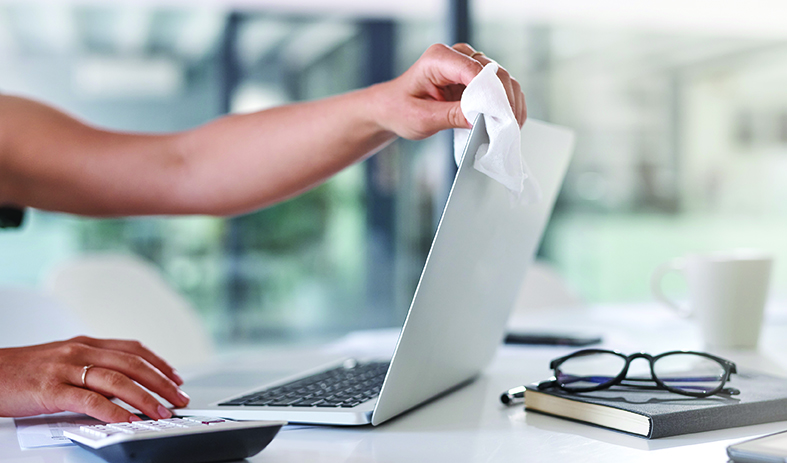
Reckitt Professional‘s Lysol Pro Solutions has revealed the top office surfaces with the highest risk of germs.
The researchi, conducted by a team of scientists, uncovered higher-risk hotspots a typical office worker can unknowingly encounter throughout the working day, potentially exposing them to germs such as rhinovirus, rotavirus, and norovirus.
Against this backdrop, the following surfaces were identified as the top 10 germiest hotspots in a typical US office (in no particular order):
- Elevator buttons
- Coffee machine handles/buttons
- Refrigerator doors
- Kitchen sink taps/handles
- Vending machines
- Restroom door handles
- Computer keyboards and mouses
- Telephones
- Printers
- TV remote controls.
According to the study, hotspots such as keyboards and elevator buttons present a unique challenge when it comes to cleaning and disinfecting. These uneven surfaces with multiple crevices provide a host of hiding spots for germs and must be given extra attention by cleaning teams and employees when being cleaned and disinfected.
In addition, timing and frequency of cleaning must be given special consideration for common area hotspots – for example after a meeting has taken place in the conference room. If cleaning staff can’t clean before and after every meeting, disinfecting products can be placed in the conference room for employees to use to help protect themselves and their co-workers.
It is also unrealistic to expect elevator buttons to be disinfected by cleaning staff after every use. Therefore, empowering office workers to engage in the hygiene experience, for example by practicing good hand hygiene before and after touching these surfaces or office workers using a disinfecting wipe on the buttons before touching them, can help break the chain of infection of germs.
Dr. Lisa Ackerley, director, medical and scientific engagement, hygiene, at Reckitt’s Lysol Pro Solutions, said the sheer number of shared surfaces in today’s evolving workplaces makes it easy for germs to be spread and harder for cleaning teams and employees to understand where, when, and how to clean and disinfect potential hotspots.
“To help protect offices, additional germ-protection must be implemented by both employers and by employees themselves. Knowing exactly which areas to focus disinfection on and when provides the framework for a more intelligent approach to hygiene, helping inspire confidence amongst America’s workforce to return to the office.”
i Research involved measuring surface contamination via ATP (adenosine triphosphate) analysis, analyzing people flow through public spaces, and reviewing published literature studies
Comment below to have your say on this story.
If you have a news story or tip-off, get in touch at info@incleanmag.co.nz.
Sign up to INCLEAN NZ’s newsletter.